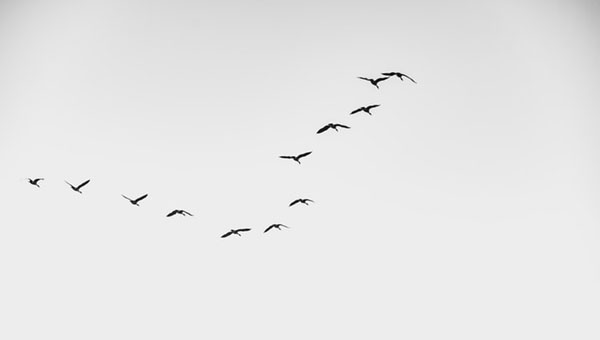By Yvonne Sam
Contributing Columnist
 I am not endeavoring to raise a breed of ornithologists, but instead, desirous of bringing about a heightened awareness of something that should not be viewed as being “for the birds”.
I am not endeavoring to raise a breed of ornithologists, but instead, desirous of bringing about a heightened awareness of something that should not be viewed as being “for the birds”.
Next autumn when we see geese migrating south for the winter, note that they fly in a distinct V formation — where one goose is the leader and the flock follows behind, in a V-shape.
You may consider what science has discovered, as to why they fly that way. As each bird flaps its wings, it thereby creates uplift for the bird, immediately following. By maintaining the V formation, the entire flock adds at least 71 percent greater flying range, than if each bird flew on its own. Each bird benefits from the air currents passing the leader, which allows them to fly longer distances.
It is clear to see from the formation V that:
People, who share a common direction and sense of community, can get where they are going more quickly and easily, because they are travelling on the thrust of one another.
Should a goose fall out of formation, it immediately feels the drag and resistance of trying to go it all alone, and quickly finds itself back in formation, to take advantage of the lifting power of the bird in front.
If we have the sense of a goose, we will stay in formation with those people, who are heading the same way we are.
In the event of the head goose becoming tired, it rotates back into the group and another goose assumes the lead position — flying point. The V formation remains unchanged.
It is sensible to take turns doing demanding jobs, whether with people, or with geese flying south.
In order to encourage the geese flying up front to keep up their speed, geese honk from behind. As a community we should ask the question, “What message do we give when we honk from behind?” Do others think we are out of our mind?
Finally — and this is of vital importance — in the event of a goose becoming sick or wounded by gunshot, and falls out of the formation, two other geese fall out with that goose and follow it down to lend help and protection. They stay with the fallen goose until it is able to fly or until it dies; and only then do they launch out on their own, or with another formation, to catch up with their own group.
If we have the sense of a goose, we will stand by each other like that.
Yvonne Sam, a retired Head Nurse and Secondary School Teacher, is Vice-president of the Guyana Cultural Association of Montreal. A regular columnist for over two decades with the Montreal Community Contact, her insightful and incursive articles on topics ranging from politics, human rights and immigration, to education and parenting have also appeared in the Huffington Post, Montreal Gazette, XPressbogg and Guyanese OnLine. She is also the recipient of the Governor General of Canada Caring Canadian Citizen Award.
 Pride News Canada's Leader In African Canadian & Caribbean News, Views & Lifestyle
Pride News Canada's Leader In African Canadian & Caribbean News, Views & Lifestyle





